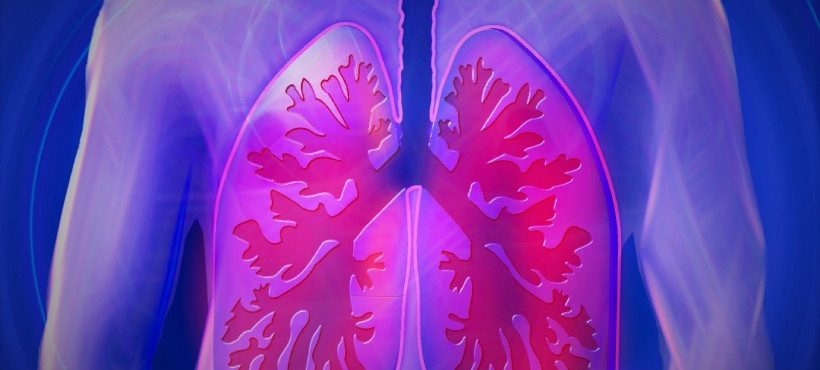
Palliative Care Regimen Options for End-Stage COPD Patients
Living with a chronic disease is difficult. It may cause extreme pain, or it may limit mobility. Chronic obstructive pulmonary disease (COPD) is one of the most difficult diseases because it causes both.
COPD is inflammation of the lungs. Airways become less elastic, and the walls between airways become thick. A person cannot breathe full breaths, which is painful and distressing.
The disease progresses over time, with the last symptoms being called “end-stage COPD.” 16 million adults in the United States have COPD, and thousands are diagnosed with end-stage COPD.
But anyone can get treatment for it. Palliative care offers pain relief and psychological support.
Yet many people have misconceptions about palliative COPD treatment. They assume it’s for the very end of life. It isn’t.
Here is a quick guide on palliative treatments for end-stage COPD.
The Basics of End-Stage COPD
In order to devise the best palliative care plan for your loved one, you need to know the essentials of end-stage COPD. You have to devise a treatment plan that is specific to your loved one’s symptoms and prognosis.
Keep in mind that the disease is different for everyone. But there are some common things you can consider.
Doctors classify COPD in a number of stages. They assess these stages based on lung capacity and breathing difficulty.
Not everyone with COPD progresses to the end-stage. Those at the end-stage have been hospitalized for breathing-related problems and are at high risk for bad symptoms.
Their breathing difficulties limit their mobility. They struggle to walk or eat because they have shortness of breath. They may produce phlegm, or they may need oxygen for support.
Late-stage COPD can also cause swelling, weight loss, and muscle weakness. Symptoms that require immediate emergency care include extreme difficulty breathing, confusion, and blue coloration on the lips.
There is no cure for COPD. But there are several things a patient can do.
They can take bronchodilators. These medications relax the respiratory muscles, making it easier to breathe. They work best with supplemental oxygen, which provides a steady dose to the tissues.
Some people may have COPD alongside other ailments, like diabetes. Those other ailments require separate treatment plans, but doctors can coordinate both.
Palliative Care
Palliative treatments can take place at any stage of an illness. They are not limited to end-of-life care, though many end-of-life treatments use palliative measures.
Someone can live with end-stage COPD for years. They need treatment that will reflect that life expectancy.
Palliative care provides relief from the pain that a chronic illness causes. A patient can take palliative treatments alongside curative measures.
Medications are one component of palliative care. A doctor can prescribe pain reduction drugs. A dietitian can also recommend a diet plan that provides essential nutrients for lung and heart health.
A psychiatrist can provide emotional support. A patient can talk to them about their psychological issues and work on strategies to reduce stress. They can learn deep breathing and other relaxation techniques.
A palliative treatment plan often includes family members. They need support in their own ways. They can talk to a psychiatrist, a religious official, or a doctor.
If a doctor feels a patient will die within six months, they can transition that patient to hospice care. Hospice care provides end-of-life treatments that comfort the patient and their loved ones. A doctor will not continue curative treatments, focusing entirely on pain reduction instead.
Managing COPD With Palliative Treatments
COPD causes a lot of distress, namely through the feeling of breathlessness. Even when a person is breathing, it may feel like they’re not.
Blowing air onto the face can relieve this feeling. You can use electronic fans on a low setting. A dehumidifier will remove excess moisture in the air, which may make it easier to breathe.
In addition to bronchodilators, a patient can take opiates. These can reduce pain and relax muscles. But opiates can be addictive, so incorporate them into a treatment plan with caution.
Mind-body solutions can reduce anxiety and depression. Yoga is a terrific treatment for many patients. They learn how to focus on each part of their body, moving in a precise fashion to alleviate stress.
For patients with low mobility, they can meditate. By sitting and turning inward, they move their minds off of their stressors.
Though people with end-stage COPD can live several years, many of them feel like they are going to die soon. Their sense of imminent death can lead them to withdraw from social activities and public outings.
One palliative treatment is providing a social circle for your loved one. You can connect them to other patients with COPD, or you can help them find new friends. Keep their pre-existing connections intact, then grow on their networks.
Give them opportunities to express how they feel. They can talk to you, but they can also make art and writing.
Creating stories based on their thoughts can help alleviate their anxiety. Making art is also a good activity to strengthen your connection to your loved one.
Crafting a Treatment Plan
COPD is a difficult disease to manage. End-stage COPD causes painful sensations of breathlessness and weak mobility. But patients can get help through palliative measures.
Take note of your loved one’s symptoms and treatments. Your loved one can take curative treatments while taking palliative ones.
The focus of palliative measures is on reducing pain. Blow air onto your loved one’s face and have them take bronchodilators and opiates. They can practice yoga and art therapy to reduce psychological distress.
Get help when you need it. Maple Leaf Meds provides premium medications at affordable prices for any order. Contact us today.


